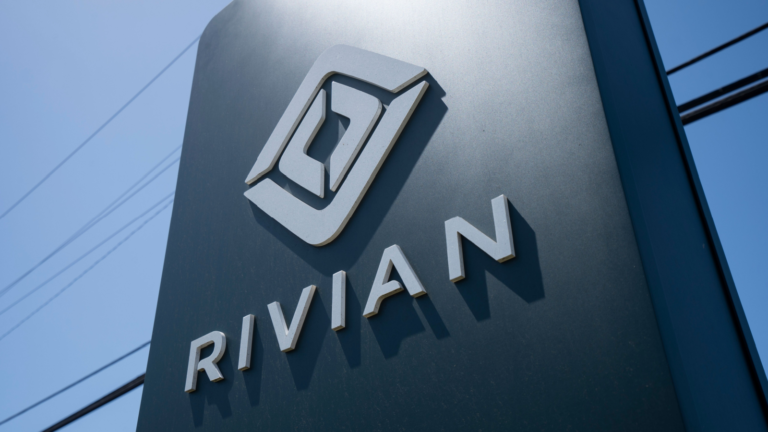Not many electric vehicle (EV) stocks have thrived in the current market downturn, but Rivian (NASDAQ:RIVN) is bucking the trend. The EV upstart has seen multiple positive developments, pushing its stock price into high gear. However, despite Rivian stock surging by 94% in the past three months, several factors fuel skepticism over its long-term bull case. The flip side to that story is also somewhat compelling, making it best to hold Rivian stock now.
Rivian was one of the many EV startups that went public amid the EV-SPAC frenzy during the pandemic years. A few days after going public in early November 2021, we saw its stock jump to an all-time high of $172.01. Since then, it has been nothing short of a horror show for its initial investors, shedding 90% from its peak value.
The past few years were eventful, though, with its cars finally hitting the roads, facing production challenges while grappling with major cash flow issues last year. However, since then, we’ve seen its top-level management looking to build its brand, improve delivery volumes, and introduce new, cost-effective EV models.
Nevertheless, the firm’s still burning through a ton of cash, and given the uncertainties in its growth story, it’s tough to fully commit to it at this point.
Fresh Designs and Cost-Savings May Tip the Scales

The Rivian stock turnaround started in March when the EV maker unveiled plans for new, affordable models. Additionally, its CEO, RJ Scaringe, also announced a strategic pullback on constructing its Georgia plant, potentially resulting in $2.25 billion in savings.
Limited cost-effective options have plagued the EV space, but Rivian’s recent introduction of three new affordable models could be a game-changer. These include the R2 SUV starting at $45,000 and two crossovers in the R3 and the R3X.
The R2 SUV is a sleeker, more budget-friendly alternative to the company’s pricier R1 models. Despite the slightly higher price point than other SUVs in this range, the R2 offers multiple stand-out features that justify the bump. It operates on a brand-new EV platform with a revamped battery setup, supporting a robust tri-motor system that can get up from 0 to 60 mph in less than three seconds.
Furthermore, the R2 is the first of Rivian’s line-up to efficiently integrate with Tesla’s (NASDAQ:TSLA) powerful Supercharger network and other NACS stations. Perhaps its biggest USP is that the R2 is developed with level 3 autonomy capabilities, unlike any other SUVs in this range.
Moreover, it’s a savvy move on Rivian’s part to leverage the productive potential of its Illinois facility instead of developing its Georgia plant. $2.25 billion in savings is massive, especially considering it forms over 28% of the $7.9 billion in its cash reserve.
Financial Strains and Key Partnerships in Focus

Perhaps the biggest catalyst for Rivian stock was automobile giant Volkswagen (OTCMKTS:VWAGY) announcing plans to invest $5 billion in its business. The cash infusion is part of a partnership that will grant Volkswagen access to Rivian’s electrical architectures and software.
Consequently, we’ve seen Rivian stock surge north of 57% in the past month. The announcement was soon followed up by Rivian’s management, reaffirming its full-year production guidance and that it would likely generate positive gross profit in the fourth quarter (Q4).
These developments were more than welcome by Rivian, particularly the much-needed cash injection. Over the past couple of years, the firm has burned through roughly $12 billion to scale its business. Clearly, with just $7.9 billion in cash, it needs a lot of funding to push on from here.
Unfortunately, the expansion has and will continue to be mostly at the expense of its shareholders. Outstanding shares rose from 204 million in 2021 to 995.3 million in 2024, a staggering 388% increase. Additionally, the 1-year long-term change in its debt load stands at a worrying 63%.
Hence, Rivian is in a precarious spot financially, and the massive investment from Volkswagen should help steady the ship. However, it must sustain strong demand for its vehicles in the coming quarters to maintain momentum. The R2 and its other budget-friendly models will be crucial in achieving this, but they won’t scale significantly until 2027. Therefore, partnerships like the one with Volkswagen will be incredibly important as it continues to burn through a boatload of cash each quarter.
Final Word On Rivian Stock

Rivian looks much better in shape than last year and is on the back of multiple positive developments. In some ways, this has inspired investor confidence again, pushing the stock back into the limelight. On top of this, it has numerous growth catalysts that could transform its trajectory over the next few years.
However, its cash burn is a major worry, and it could play spoilsport again if it isn’t managed effectively. That’s because for the early days of a technology-heavy company like Rivian, cash, and the necessary capital to expand research and development are key to winning new customers and creating a product that sells well.
As a result, Rivian remains a ‘show-me’ story, worth monitoring closely before making a long-term investment. Right now, the signs seem to be pointing toward a stable and realistic future for the company, but that isn’t guaranteed considering the broader challenges the general EV market currently faces.
On the date of publication, Muslim Farooque did not have (either directly or indirectly) any positions in the securities mentioned in this article. The opinions expressed in this article are those of the writer, subject to the InvestorPlace.com Publishing Guidelines
On the date of publication, the responsible editor did not have (either directly or
indirectly) any positions in the securities mentioned in this article.
